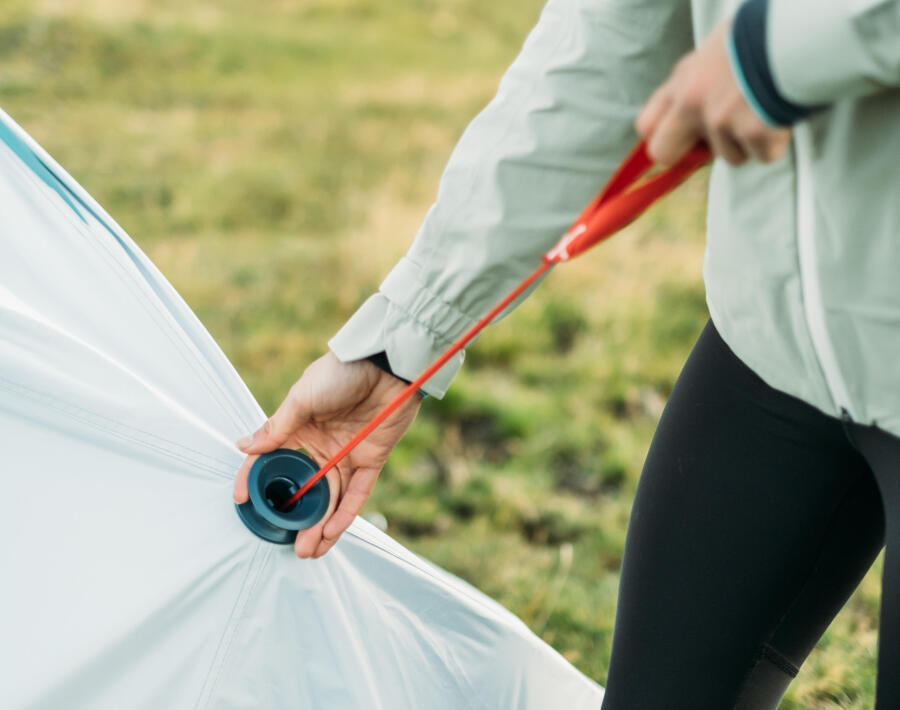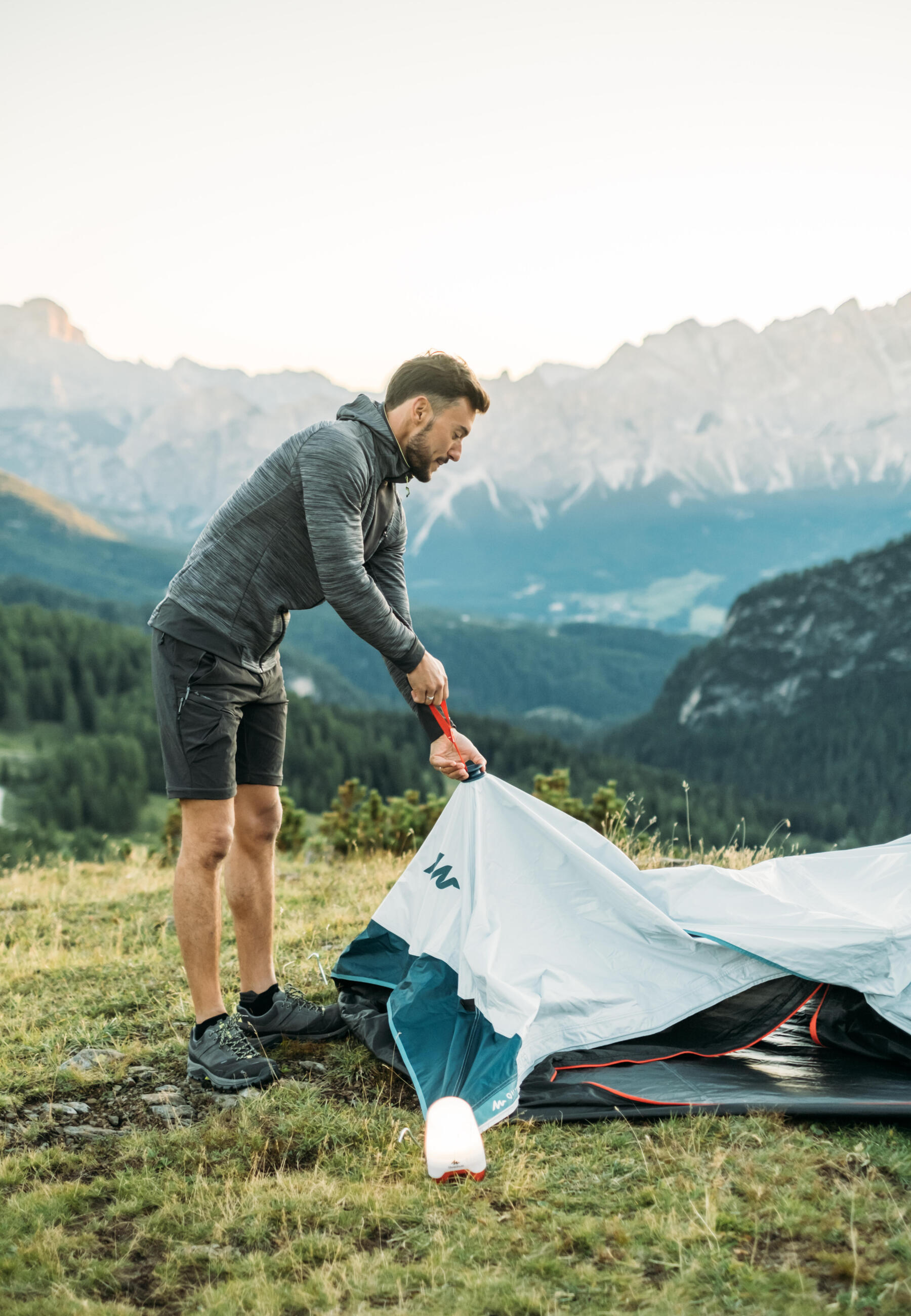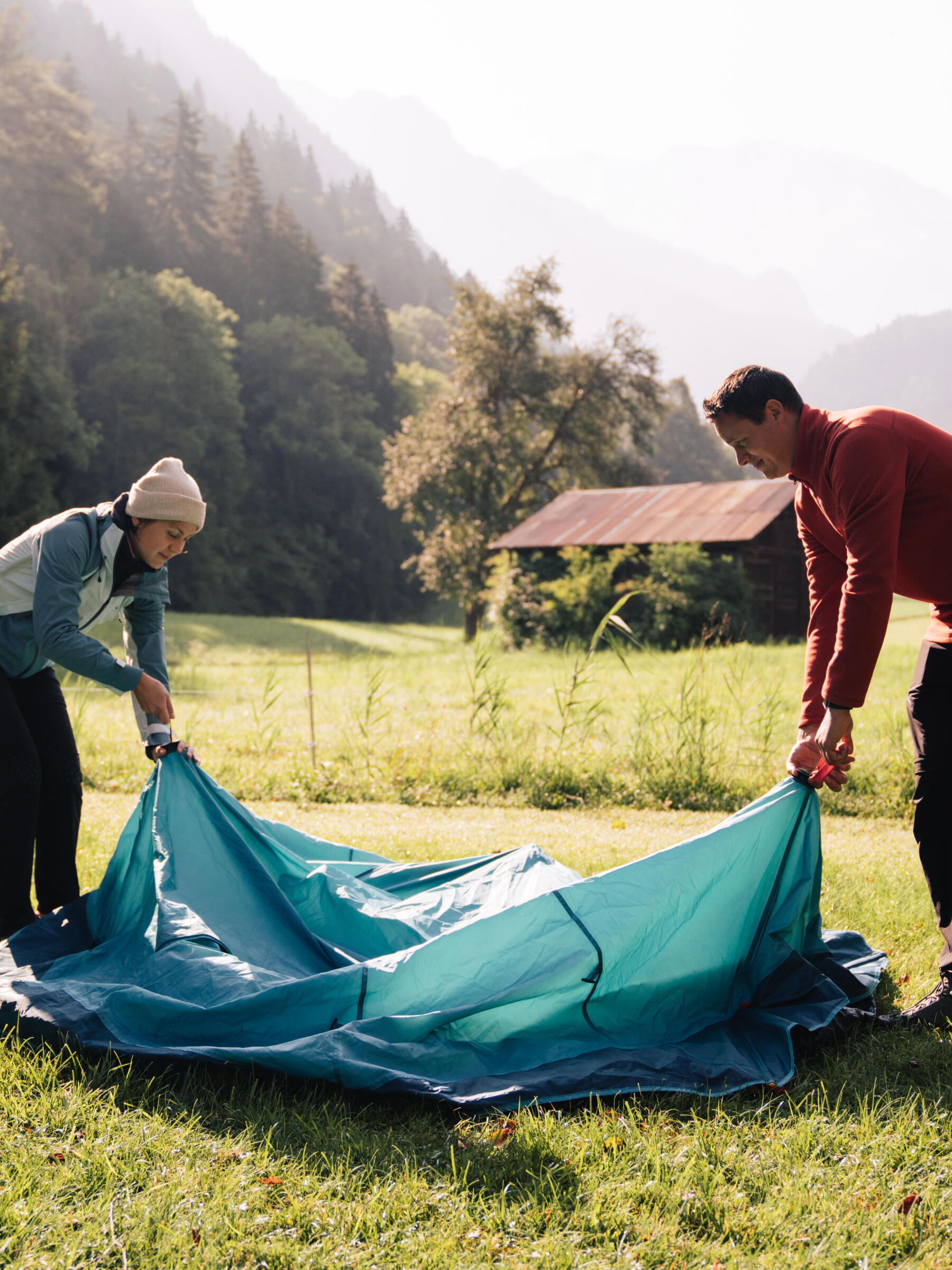From 8 to umbrella, the genesis of the 2 seconds easy
The hardest thing with an innovative product is to think about the next.
The Quechua 2 Seconds tent is so exciting, it was only 6 years after its marketing debut that we said to ourselves that it’s time to think about something else.
Between 2017 and 2018, the whole team was renewed.
The former product manager Jean-François had now retired, while Abi the engineer was working on Air Seconds inflatable family tents.
Make way for a new generation, led by Reka, a former Hungarian athletics champion who’s passionate about these complete and complex products.
Here at Quechua, we’re not limited in this kind of project and invest the time and energy necessary to achieve the desired result.
It took nearly 5 years of development and hundreds of prototypes to arrive at a tent that’s still revolutionising the world of camping by making life even easier for all those who like to sleep outdoors.
A 2 Seconds Easy tent that meets all the constraints, makes dismantling easier (with a single touch of the finger), transport (much more compact) while offering a different but no less exciting ease of opening to that of its cousin, the 2 Seconds.








